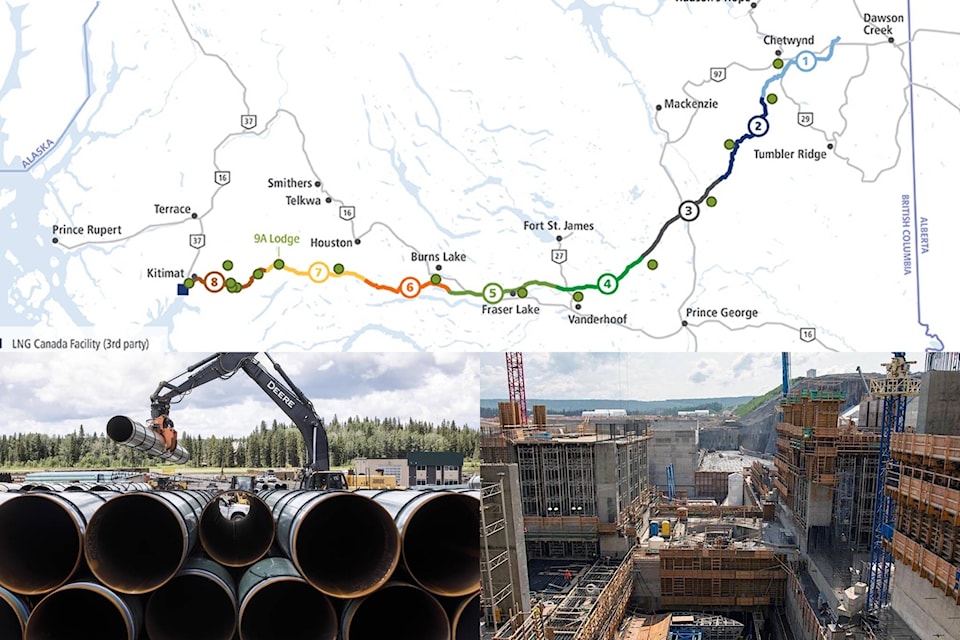There is nothing simple about resource extraction in B.C.
At times it’s hard to tell what’s messier – the process or the politics.
Three major projects are currently staggering toward a future that will: pave a way to a greener economy, hasten the world’s descent into climate catastrophe, bolster the economic fortunes of indigenous communities, tighten the yoke of colonization, fund our schools and hospitals for generations, or feed the revenue pursuits of corporate boardrooms.
If British Columbians are confused, it is not surprising.
Last week the RCMP moved in to enforce a court injunction at one of the more complicated projects – construction of the near Smithers.
For more than a year, protesters have blocked construction of the pipeline because the company had failed to gain permission from the hereditary chiefs of the Wet’suwet’en First Nation, whose traditional and unceded land the pipeline will cross.
The $6.6-billion project is a critical step in the construction of a $40-billion liquified natural gas export terminal at Kitimat. It has the support of Premier John Horgan and his NDP government, and clearance by the B.C. Supreme Court.
More importantly, it has the support of 20 First Nations, including five of six elected councils from the Wet’suwet’en.
They see the project as a way to lift their communities out of poverty.
“For the communities and councils, it means a stable and long-term source of revenues that will help them work on closing the social-economic gap that keeps people so far behind others in Canada,” First Nations LNG Alliance CEO Karen Ogen-Toews, a former elected chief councillor of the Wet’suwet’en, told the Northern Sentinel �������� in 2018.
Wet’suwet’en hereditary chiefs see the conflict as a defining moment in a fight to recognize the long unsettled claims to indigenous rights and title in B.C.
Included in that call is the obligation described by the Canadian Supreme Court for the informed consent of Indigenous peoples before projects proceed.
However, the extent of those obligations were defined just days earlier by a unanimous decision by the Federal Court of Appeal about another contentious pipeline.
Last Monday, the court concluded the federal government had done its duty in negotiating with First Nations along the Trans Mountain Pipeline route after failing to do so earlier.
While the court admitted consent was not unanimous, it said, “While the parties challenging the cabinet’s decision are fully entitled to oppose the project, reconciliation and the duty to consult do not provide them with a veto over projects such as this one.”
It was the second court defeat for TransMountain opponents in two weeks. Earlier, the Supreme Court squashed B.C.’s claim it should be allowed to regulate what flows through the pipelines.
Meanwhile, the massive Site C hydroelectric dam continues to draw ire.
The project, aimed at supplying our electrical needs in a post-fossil fuel environment, was criticized in a United Nations report because it failed to consult Indigenous groups. (Ironically, the report was later criticized by Indigenous groups because its authors failed to consult them.)
Despite the protests, delays and court challenges, work is proceeding on all three of these projects.
But not without cost. On Friday, Trans Mountain said the cost to build its pipeline had climbed to $12.6 billion from $7.4 billion.
Against this backdrop of delay and obfuscation, the mountains of coal piled at the Robert Banks terminal near Tsawwassen await export to Asian markets. Next door tower the shipping containers that arrive from those Asian ports, filled with the disposable products our society insatiably demands – most produced in coal-fired factories.
Greg Knill is a columnist and former Black Press editor. Email him at greg.knill@blackpress.ca



